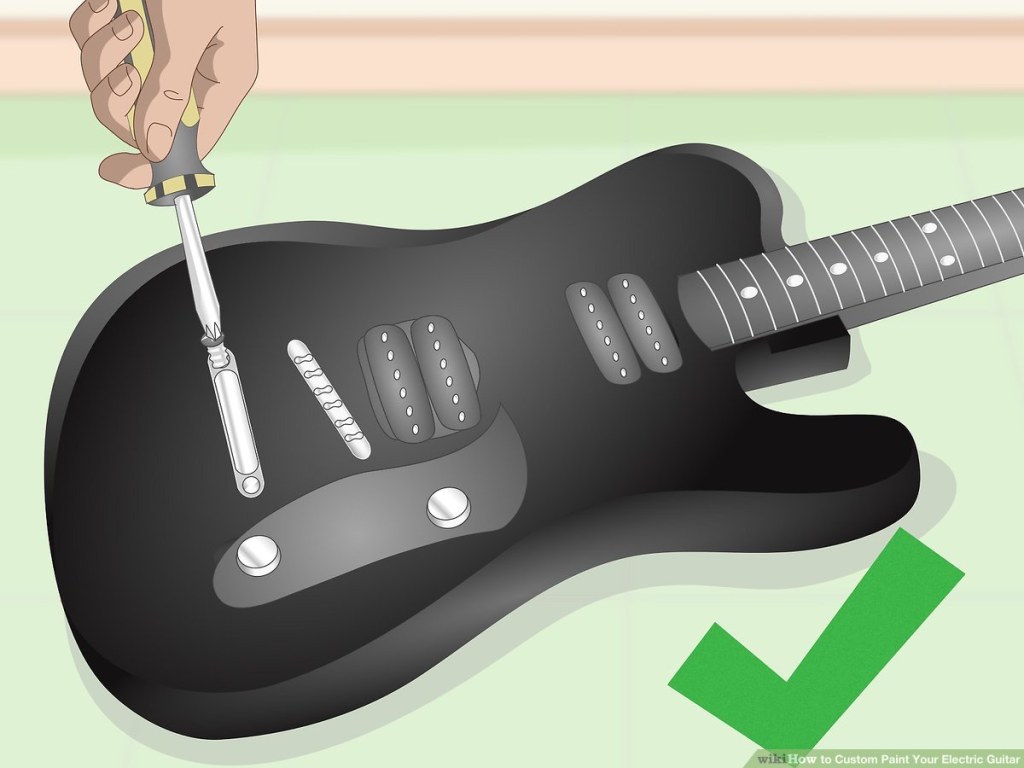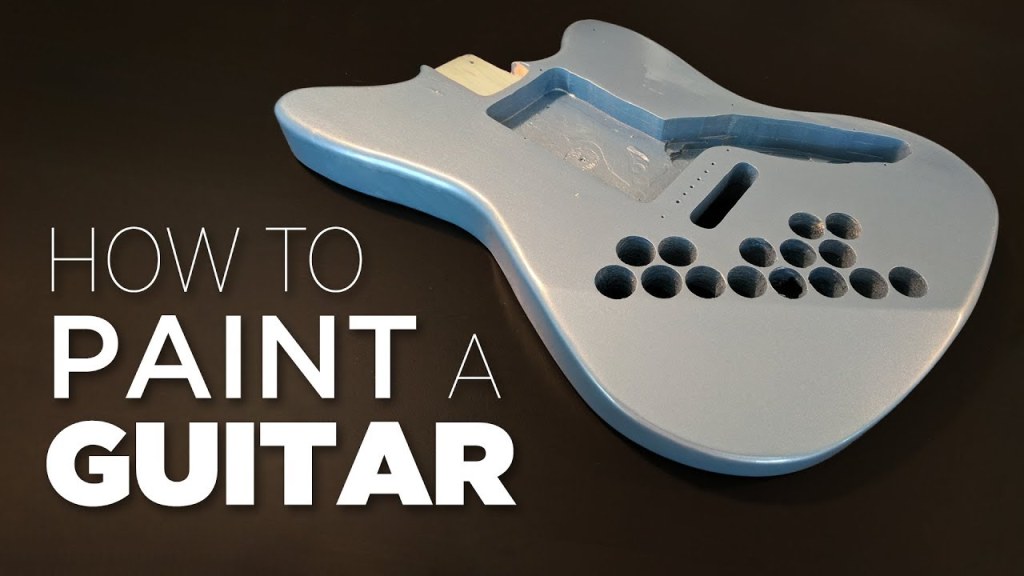Master The Art: How To Paint An Electric Guitar Like A Pro And Transform Your Sound!
How to Paint an Electric Guitar
Greetings, Smart Readers! In this informative article, we will guide you on how to paint an electric guitar. Whether you are a seasoned musician or a passionate guitar enthusiast, giving your electric guitar a fresh coat of paint can be a creative and rewarding experience. Not only does it allow you to personalize your instrument, but it can also breathe new life into an old or worn-out guitar. So, without further ado, let’s dive into the world of guitar painting!
Introduction
Painting an electric guitar is a meticulous process that requires careful preparation, attention to detail, and a steady hand. It involves disassembling the guitar, sanding the surface, applying primer, painting with precision, and sealing the finish. By following the steps outlined in this article, you can transform your guitar into a work of art that reflects your unique style and personality.
3 Picture Gallery: Master The Art: How To Paint An Electric Guitar Like A Pro And Transform Your Sound!
Before we proceed, let’s gather all the necessary materials for this project. You will need a screwdriver set, sandpaper, masking tape, primer, guitar paint, clear coat, a paintbrush, and a well-ventilated workspace. Once you have everything ready, let’s get started on this exciting journey of guitar painting!
What is Guitar Painting?
Guitar painting is the process of applying a new layer of paint or finish to an electric guitar. It involves transforming the guitar’s appearance and protecting it from wear and tear. Whether you want to change the color, add designs, or create a vintage look, painting your electric guitar can be a fun and creative endeavor.
Who Can Paint an Electric Guitar?

Image Source: wikihow.com
Anyone with a passion for guitars and a desire to customize their instrument can paint an electric guitar. Whether you are a professional musician, an amateur player, or simply a guitar enthusiast, painting your electric guitar can be a fulfilling project that allows you to showcase your creativity and individuality.
When Should You Paint an Electric Guitar?
The ideal time to paint an electric guitar is when you feel the need for a change in its appearance or when the existing finish is worn, chipped, or damaged. Painting your guitar can also be a part of refurbishing an old instrument or making it match a new theme or style.
Where Should You Paint an Electric Guitar?
Painting an electric guitar requires a well-ventilated workspace to ensure proper air circulation and minimize the inhalation of fumes. Ideally, you should paint your guitar in a garage, a dedicated workshop, or an outdoor area with good ventilation. It is essential to choose a clean and dust-free environment to achieve a smooth and professional-looking finish.
Why Should You Paint an Electric Guitar?
There are several reasons why you might want to paint an electric guitar. Firstly, painting allows you to customize your instrument and make it truly unique. Secondly, it can breathe new life into an old or worn-out guitar, giving it a fresh and appealing look. Lastly, painting your guitar can be a creative outlet and a way to express your personal style and artistic vision.
How to Paint an Electric Guitar – Step by Step Guide
Step 1: Disassemble the Guitar

Image Source: ytimg.com
The first step in painting an electric guitar is to disassemble it. Remove the strings, pickguard, bridge, pickups, and any other removable parts. This will make it easier to paint each component separately and achieve a professional-looking finish.
Step 2: Sand the Surface
Using sandpaper, gently sand the entire surface of the guitar, including the body, neck, and headstock. This will create a rough texture that allows the paint to adhere better. Sanding also helps to remove any existing finish or imperfections.
Step 3: Apply Primer

Image Source: ytimg.com
Apply a coat of primer to the sanded surface of the guitar. Primer helps the paint adhere better and provides a smooth base for the final color. Use a high-quality primer specifically designed for use on guitars.
Step 4: Paint with Precision
Once the primer is dry, it’s time to apply the paint. Use a fine paintbrush or an airbrush for precise and even application. Start with thin coats of paint and build up the color gradually. Allow each coat to dry before applying the next one.
Step 5: Seal the Finish
After the paint has dried completely, seal the finish with a clear coat. This protective layer adds shine and durability to the paint job. Apply multiple coats of clear coat, allowing each coat to dry before applying the next one.
Step 6: Reassemble the Guitar
Once the clear coat is dry, reassemble the guitar by putting all the removed parts back in place. Make sure everything fits correctly and adjust any necessary settings, such as the bridge height or pickup height.
Step 7: Enjoy Your Newly Painted Guitar
Once the assembly is complete, your electric guitar is ready to be played and admired. Enjoy the satisfaction of owning a beautifully painted instrument that reflects your personality and style.
Advantages and Disadvantages of Painting an Electric Guitar
Advantages:
1. Customization: Painting your electric guitar allows you to create a unique look that matches your personal style.
2. Cost-Effective: Painting your guitar is usually more affordable than buying a new one.
3. Creativity Outlet: It provides an opportunity for artistic expression and creativity.
4. Restoration: Painting can revitalize an old or worn-out guitar, giving it a fresh and appealing appearance.
5. Personalization: Painting allows you to make your guitar stand out and reflect your individuality.
Disadvantages:
1. Time-Consuming: Painting an electric guitar requires time and patience to achieve a professional-looking finish.
2. Skill Requirement: It may require some basic knowledge of painting techniques and guitar disassembly.
3. Risk of Damage: If not done correctly, there is a risk of damaging the guitar’s electronics or structural integrity.
4. Limited Reversibility: Once painted, it can be challenging to revert the guitar back to its original finish.
5. Personal Preference: Some guitarists prefer the natural look and feel of the original wood instead of a painted finish.
Frequently Asked Questions (FAQs)
Q1: Can I paint my guitar without disassembling it?
A1: While it is possible to paint a guitar without disassembling it, removing the parts will yield better results and ensure an even paint application.
Q2: Do I need to use a specific type of paint for a guitar?
A2: Yes, it is recommended to use paint specifically designed for use on guitars to achieve the best results.
Q3: How long does it take to paint an electric guitar?
A3: The painting process can take several days, depending on factors such as drying time, the number of coats, and the complexity of the design.
Q4: Can I paint over an existing finish?
A4: Yes, you can paint over an existing finish after proper sanding and preparation. However, it is essential to ensure good adhesion and a smooth surface.
Q5: How do I protect my newly painted guitar?
A5: To protect the finish of your newly painted guitar, use a guitar polish or wax periodically and handle the instrument with care to avoid scratches or dents.
Conclusion
In conclusion, painting an electric guitar is a creative endeavor that allows you to customize your instrument and showcase your individuality. By following the step-by-step guide in this article, you can transform your guitar into a unique work of art. Remember to take your time, pay attention to detail, and enjoy the process. So, go ahead and pick up that paintbrush – your newly painted electric guitar awaits!
Final Remarks
Disclaimer: Painting an electric guitar requires some level of skill and knowledge. If you are unsure or uncomfortable with the process, it is always advisable to seek professional assistance. The information provided in this article is for educational purposes only and should not be considered as professional advice. Proceed with caution and ensure the safety of yourself and your instrument throughout the painting process.
This post topic: Electric



